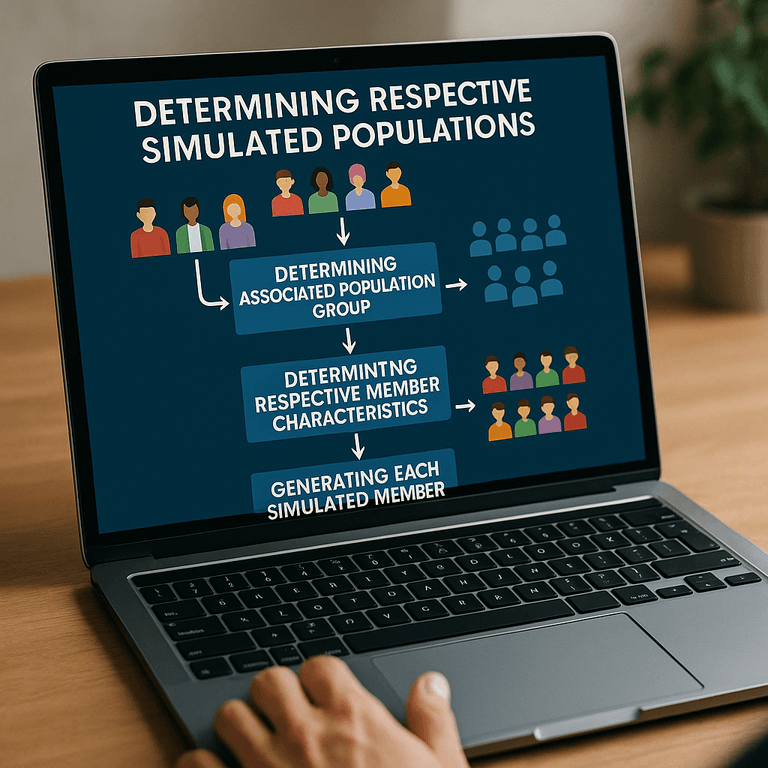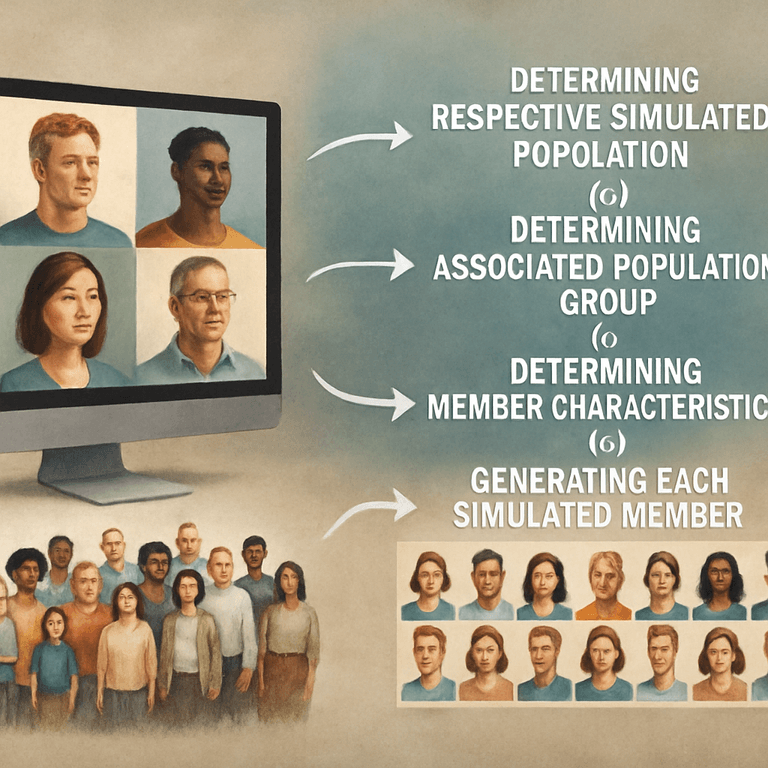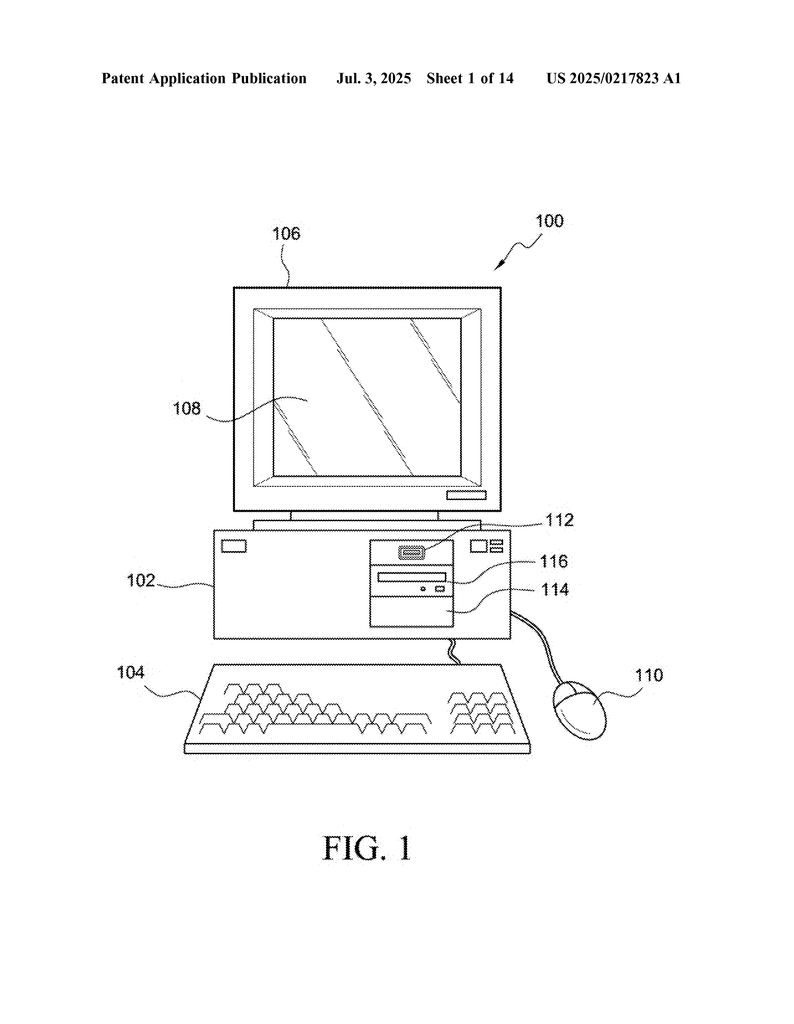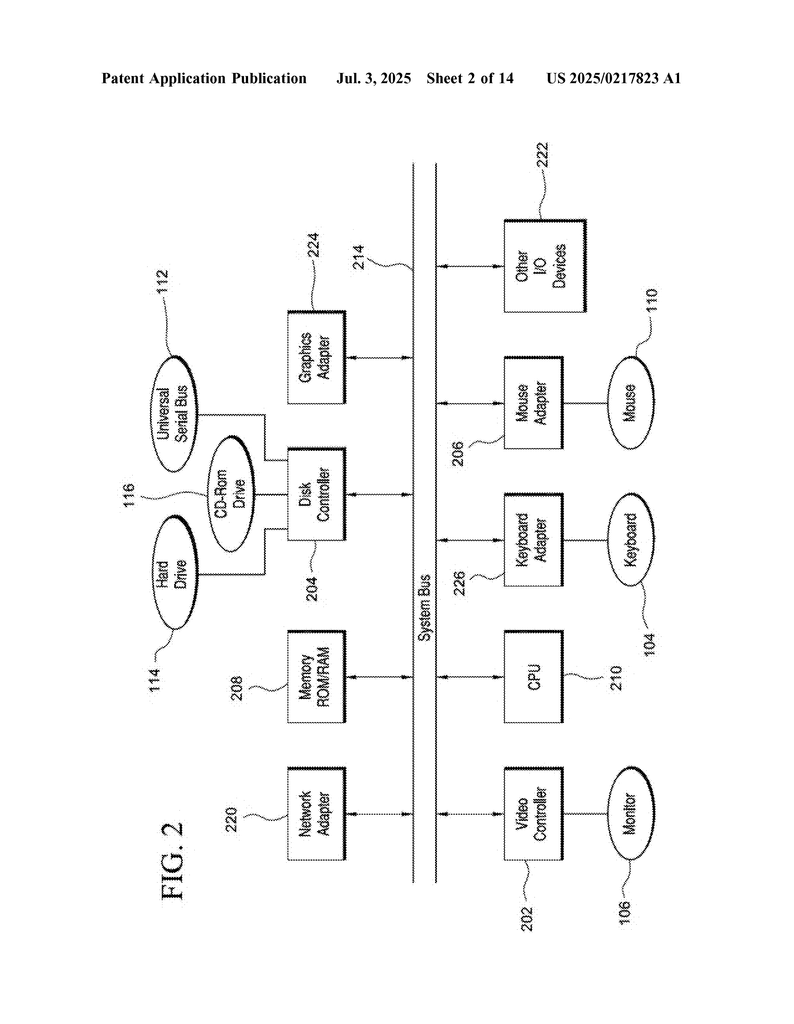Invented by Breitweiser; Edward W., State Farm Mutual Automobile Insurance Company
Let’s dive into a new way that computers can help people ask “what if” about real groups of people. This article explains a very detailed patent application about making pretend (simulated) groups based on real people, using AI. We’ll go step by step, so by the end, you’ll know why this matters, what’s new about it, and how it works.
Background and Market Context
Many companies, from stores to insurance firms to car makers, want to know what people will do before making big changes. These could be changes to prices, products, or services. For example, a store might want to know if lowering prices will make more people buy something. An insurance company might want to know if a new rule will make people happier or upset. For a long time, companies have used surveys, focus groups, and lots of data to guess what might happen. But these ways are slow, cost a lot, and sometimes don’t show the full picture.
Now, technology is changing this. Big data and AI can help companies learn from huge amounts of information, much faster than before. But even these smart systems have a problem: they usually pretend to be “the average person” and can’t easily act like a specific group (like “30-year-old moms in Texas” or “sports fans in Chicago”). To make AI act like a special group, you usually have to collect new data and train the AI all over again. That takes time and money.
This is where the patent comes in. It describes a way to let computers quickly make pretend groups—made up of “simulated characters”—who act and make choices just like real groups of people. These pretend groups can be made to match certain ages, jobs, places, or other things. They can be asked questions, and their answers can be used to guess how real people might react. This helps companies test ideas before they make big changes. It could save money, help avoid mistakes, and make it easier to try new things without real-world risk.
The market for this idea is huge. Think about all the times when companies, schools, or even governments want to know how people will respond to something new. They might want to see how customers will like a new product, how employees will feel about a new rule, or how people in a town will react to a new law. This invention gives them a tool to do that, quickly and safely, using AI.
Scientific Rationale and Prior Art
The science behind this idea is all about using AI and machine learning to make computer characters that look and act like real people in a group. Let’s break that down in simple words.
First, there’s a big field in AI called “natural language processing” (NLP). This is where computers try to understand and use human language. For a while, NLP tools like chatbots could talk in a way that sounds real, but they didn’t really have a “personality.” They just answered questions using general data from the internet or big books.
Then came “generative AI,” which can make new text, images, or answers based on patterns it learns. This is how tools like ChatGPT work. But again, these tools usually try to sound like the average person, not a special group.
People have tried to make AI act more like real groups before. Some older systems let you pick a few things (like age or gender) and would adjust answers a bit. But these were very basic. To really act like a group—say, “retired teachers in Florida”—you’d need to collect data about that group, train the AI with it, and then hope it works. This takes a long time and isn’t flexible. If you want to switch to another group (“teenagers in New York”), you have to start over.
What makes this patent different is that it combines several things:
- It lets you make many “simulated characters” at once, each with their own set of traits (like age, job, or where they live).
- These characters can be grouped into “simulated populations” that match real-world segments (like all the customers of a store, or all the people in a city).
- You can ask these pretend groups questions, and the AI gives answers that reflect what real people in those groups might say or do.
- If you get feedback from real people (“that answer seems off”), the AI can learn and improve itself without needing to start over from scratch.
This is a big improvement over old ways. It means you don’t have to re-train the AI every time you want to test a new idea. You can quickly make pretend versions of almost any group, change their traits, and see what happens. You can even use feedback to make the groups better over time.
In summary, the patent stands out because it automates the process of creating, adjusting, and learning from pretend populations, using AI in a way that is fast, flexible, and practical for real-world use.
Invention Description and Key Innovations
Now let’s dig into what this invention does and why it’s special. Don’t worry, we’ll keep it simple but detailed, so you understand how it works and why it matters.
The main idea is to let a computer make a pretend group of people (a simulated population) that acts like a real group. Here’s how the system works:
1. Simulated Characters: The computer creates many pretend people, called simulated characters. Each one is given certain traits. These can be things like age, job, where they live, what they like, or any other detail you want.
2. Population Groups: The simulated characters are put into groups that match real-world segments. For example, you might make a group for “30-40 year old moms in Texas,” or “retired teachers in Florida.” You decide what groups you want, and the computer fills them with the right kinds of characters, based on the traits you pick.
3. Matching to Real People: If you know some things about real people (maybe you have a list of your customers), the system can match the pretend characters to the real ones. This makes the pretend group even more realistic.
4. Adjusting Traits: The system can tweak the pretend characters’ traits to make the group more accurate. For example, if you know that most of your customers are women in their 40s, the system can make sure your pretend group fits that pattern.
5. Simulated Responses: Now comes the fun part. You can ask the pretend group questions. These could be things like, “Would you buy this new product?” or “How would you feel about this price change?” The computer uses AI to answer, with responses that try to match what the real group would probably say.
6. Learning from Feedback: If real people give feedback on the answers (“That doesn’t sound right”), the system can learn and adjust. It can retrain its models to do better next time, without having to start from scratch.
7. Showing Results: The answers from the pretend group can be shown on a screen, so you can see what might happen in the real world if you make a change.
Let’s look at a simple example. Imagine you’re a store manager. You want to know if dropping the price of a certain toy will make more moms in Texas buy it. You tell the system to make a pretend group of “moms in Texas.” Each pretend mom gets traits like age, kids’ ages, and shopping habits. You ask, “Would you buy this toy if it was $10 instead of $15?” The system gives you answers, like “Yes, more would buy,” and even explains why (“because $10 feels like a better value to this group”). If you later find out from real moms that the answer should be different, you can tell the system, and it will learn to do better.
The patent covers many technical details to make this work. For example:
- How the simulated characters are created and matched to real-world groups.
- How the traits of each character can be changed to make the group more accurate.
- How AI models are used to generate answers to questions, and how these models can be retrained using feedback.
- How the system can use data from databases, or even ask people for extra details if needed.
- How everything is shown to users in a way that’s easy to understand and use.
One very important part is that the system can be used by lots of different people, not just computer experts. A store manager, insurance agent, or marketing person can pick groups, ask questions, and get answers—all without writing code or knowing how AI works on the inside.
The patent also explains that this system can be used in many places: in stores, banks, car companies, insurance, even in video games or virtual worlds. It works on computers, phones, tablets, and can even connect to smart devices or wearables.
Here are some of the key innovations:
- Making pretend groups that are quick to build and easy to change, without needing to start over each time.
- Using feedback from real people to make the system smarter over time.
- Letting people ask “what if” questions, and getting detailed, group-specific answers right away.
- Making the system work for any kind of group, big or small, and for almost any kind of question.
- Keeping everything flexible, fast, and easy to use, so more people can use it to make better decisions.
In short, this invention lets anyone test ideas on a pretend version of their real customers, users, or other groups—quickly, safely, and with answers that get smarter over time.
Conclusion
We’ve just gone through an exciting new patent about making and using pretend groups of people with AI. This idea is big because it solves a real problem: helping companies and other groups predict what real people will do, without needing to run slow, expensive studies or retrain AI from scratch for every new group. The system creates simulated characters, makes groups that match real-life segments, lets you ask questions, and learns from feedback to get better over time. It’s quick, flexible, and usable in many industries. As technology keeps moving forward, tools like this will help leaders make smarter, safer, and more confident decisions—by seeing into the future, one pretend group at a time.
Click here https://ppubs.uspto.gov/pubwebapp/ and search 20250217823.




